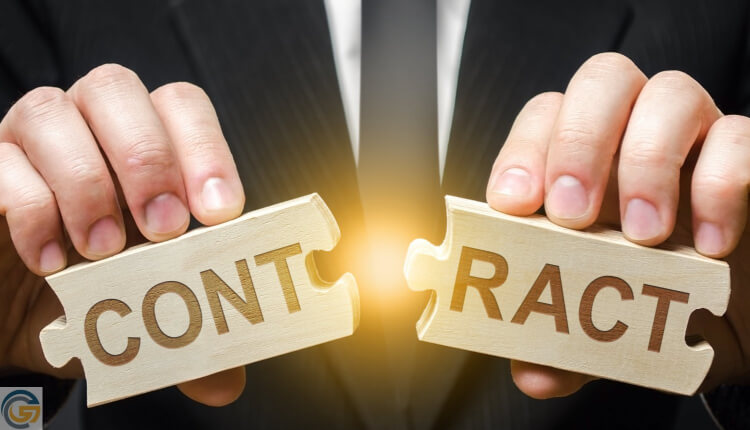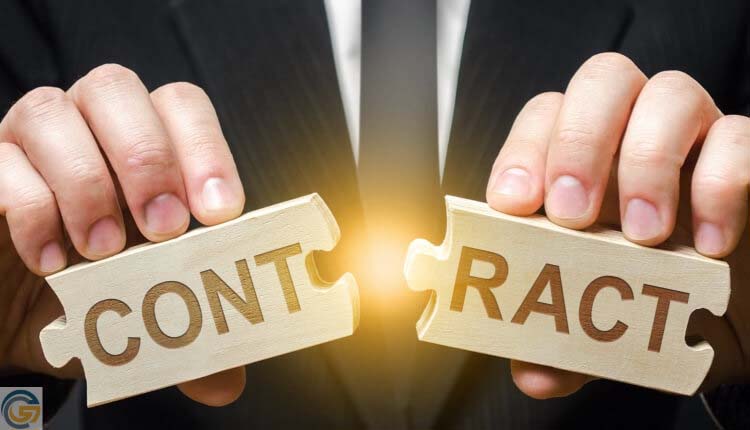Self-Employed No Tax Return Mortgage Loans
In this article, we will discuss and cover self-employed no tax return mortgage loans. Self-employed no tax return mortgage loans have been non-existent between the 2008 Great Recession and early 2017. However, Self-Employed No Tax Return Mortgage Loans made a comeback in the spring of 2017. GCA Mortgage Group now offers bank statement loans for self-employed borrowers.
Bank Statement Deposits Versus Income Tax Returns are Used For Income Qualification
No income tax returns are required. 12 months bank statement deposits are averaged. Average bank statement deposits are used as monthly gross income. Withdrawals do not count. So for example, if the borrower makes an average $10,000 deposit in the bank account and withdraws $9,999, the $10,000 deposit will be used as the borrower’s monthly gross income. In this article, we will cover and discuss Self-Employed No Tax Return Mortgage Loans.
When seeking a mortgage, self-employed individuals may encounter different methods for verifying their income. Two common approaches are using bank statement deposits and income tax returns. Here’s a breakdown of how each method works for income qualification:
Bank Statement Deposits:
- Verification Method:
- Lenders review 12 to 24 months of personal and business bank statements.
- Deposits are analyzed to determine consistent income flow.
- This method is used to verify actual cash flow rather than reported taxable income.
- Advantages:
- Beneficial for self-employed borrowers with significant business deductions on tax returns.
- Reflects real-time income, including cash deposits.
- Suitable for borrowers with fluctuating or seasonal income.
- Documentation Needed:
- Monthly bank statements (personal and business).
- Proof of business ownership.
- Profit and loss statements may also be needed.
Income Tax Returns:
- Verification Method:
- Lenders review the most recent one to two years of filed tax returns.
- Adjusted Gross Income (AGI) is used to determine qualifying income.
- Includes W-2s, 1099s, and other tax forms for income verification.
- Advantages:
- Standard and widely accepted method.
- Provides a comprehensive picture of financial health, including deductions and credits.
- Useful for borrowers with stable, predictable income reported on tax returns.
- Documentation Needed:
- Full tax returns (personal and business, if applicable).
- W-2 forms, 1099 forms, and other supporting tax documents.
- IRS transcripts may be requested by the lender.
Choosing the Right Method:
- Bank Statement Loans are ideal for self-employed whose tax returns don’t accurately reflect their income due to high business expenses or deductions.
- Traditional Loans: Suitable for borrowers with consistent, stable income that is clearly documented on their tax returns.
Considerations:
- Interest Rates: Bank statement loans may have higher interest rates due to perceived higher risk.
- Down Payments: Larger down payments might be required for bank statement loans.
- Lender Requirements: Different lenders have varying guidelines and may specialize in one method over the other.
By understanding the differences between using bank statement deposits and income tax returns for income qualification, self-employed borrowers can better navigate the mortgage application process and choose the method that best aligns with their financial situation.
Benefits Of Self-Employed No Tax Return Mortgage
Until now, many self-employed folks were unable to qualify for home loans. Self-employed borrowers could not qualify for mortgages due to the massive write-offs they are entitled to. Lenders use adjusted gross income from borrowers’ income tax returns. Many self-employed borrowers often have very little to no income declared as their adjusted gross income. Many business owners make a lot of income and can afford higher-end homes. The issue is they could not qualify for Self-Employed No Tax Return Mortgage until now due to write-offs on their tax returns
Loan Limits On Self-Employed Mortgage
A great benefit of self-employed mortgage financing is there are no loan limits. Many self-employed borrowers with lucrative businesses can afford higher-end homes. Government and conventional loans have maximum loan limits. Traditional Jumbo Mortgages are often difficult to qualify for unless borrowers are W2 employees. Now with the launch of self-employed mortgage, borrowers can qualify for higher-end home loans without tax returns
Mortgage Regulations On Income Qualifications
The above quotation from Dodd-Frank gives lenders the right to verify income beyond the traditional paycheck stubs and W2s. This enables self-employed borrowers to qualify for a mortgage with verification of bank statement deposits. This eliminates the requirement of income taxes. Since the launch of the self-employed no tax returns mortgage, GCA Mortgage Group’ business has increased by over 50%. Using also a free income tax calculator here can help too.
Basic Self-Employed No Tax Return Mortgage
Here are the basic self-employed mortgage guidelines:
- 10% to 20% Down Payment
- The amount of down payment depends on the borrower’s credit scores
- No private mortgage insurance required
- Mortgage rates depend on down payment (LTV) and credit scores
- No maximum loan limits on non-QM loans and bank statement loans for self-employed borrowers
- Credit scores down to 500 FICO
- No waiting period after housing event and/or bankruptcy
- Housing event is defined as foreclosure, deed in lieu of foreclosure, short sale
Qualifying For Self-Employed Mortgage With GCA Mortgage Group
GCA Mortgage Group is a national five-star lender with no overlays on government and conventional loans. GCA Mortgage Group is also mortgage expert in bank statement loans for self-employed borrowers and non-QM loans. Contact us at 800-900-8569 or text us for a faster response. Or email us at gcho@gustancho.com. We are available 7 days a week, on evenings, and weekends.
Self Employed Mortgage Loan Programs
There are two types of self-employed mortgage loan programs:
- The first Self Employed Mortgage Loan Program is the traditional full doc government and/or conventional loan program
- The second Self Employed Mortgage Loan Program is the comeback of the bank statement loans for self-employed borrowers
Bank Statement Mortgage Loans For Self Employed borrowers require no tax returns. Self Employed borrowers need to provide either two years of personal bank statements and/or two years of business bank statements. How this Self Employed Mortgage Loan Programs work is that if the borrower provides 12 months’ bank statements, then 50% of the bank deposits are used. The 12 months is averaged and 50% of the deposits are used as income. With personal bank statements, 100% of the bank deposits can be average over the past 24 months. That average will be used as the borrowers’ income. It needs to be from the same bank. No overdrafts are allowed. A 20% down payment is required. Mortgage Rates will be higher than traditional mortgage loans. Lower down payment possible with higher credit scores.
Traditional Self Employed Mortgage Loan Programs
If a mortgage loan borrower works as a salaried employee or hourly employee, they just need to provide their W-2s for the past two years and their most recent paycheck stub. The mortgage lender will also ask borrowers to provide prior two years tax returns to see what type of expenses the borrower wrote off where it might possibly reduce their monthly gross income. However, mortgage income qualification calculations are more tricky when it comes to self-employed mortgage borrowers. Many self-employed mortgage borrowers make tons of income but if they write off a lot of money as expenses, their net adjusted gross income will affect the minimum income required for them to qualify for a residential mortgage loan.
How Underwriters Qualify Self Employed Mortgage Borrowers
There are certain documents that self-employed mortgage borrowers need to provide their lenders in order to see the income they can use to qualify for their mortgage loan. The following documents will most likely be provided to your lender in order for them to calculate income for self-employed mortgage borrowers. Two years of tax returns for both your business and your personal returns. Schedule C will be analyzed. Schedule C is the section where you provide your profit and loss from your business. Schedule C is normally for a business where you are the sole owner of your business, also known as a sole proprietorship. Schedule E will be analyzed.
Schedule E of Tax Returns
Schedule E of tax returns is used for real estate holdings, real estate income, royalty income, partnership income, S corporations, estates, real Estate Mortgage Investment Conduit, and real estate investment trusts. The 1120S if the borrower has it on tax returns. Form the 1120S is for S Corp report of the profit and loss of business. K-1 forms need to be provided if it applies to the borrower. K-1 forms reveal the percentage of profit and loss related to sharing of the business. Profit and loss statements need to be provided. A profit and loss statement is an outline and summary of a business’s annual income and expenses as well as profit and losses.
Amending Tax Returns For Self Employed Mortgage Borrowers
Many self-employed mortgage borrowers ask me if they can amend their tax returns so they can change their tax write-offs so they can declare more income in order to qualify for a mortgage loan. It is perfectly legal to amend tax returns. However, they need to wait a minimum of six months after you amend tax returns in order for the lender to be able to use the amended tax returns to qualify for a mortgage loan. On the flip side, if borrowers declare tons of income and little expenses for mortgage qualification purposes and amend tax returns after they close on the mortgage loan, borrowers are stepping into a gray area. Borrowers who amend tax returns right after they have closed on a mortgage loan and had intent in inflating their income just for qualification purposes, then it is illegal and can be classified as mortgage fraud. However, if the borrower did not have intent on defrauding or fudging income but realized that they forgot to deduct unexpected expenses after filing tax returns, then they should be alright. Self Employed Borrowers who need to qualify for a mortgage with a direct lender with no overlays on government and conventional loans can contact us at GCA Mortgage Group at 800-900-8569 or text us for a faster response. Or email us at gcho@gustancho.com. We are available 7 days a week, on evenings, weekends, and holidays. Self-Employed Lending Guidelines With No Income Tax Returns Required made self-employed borrowers nearly impossible to qualify for a mortgage. Lenders re-introduced and launched bank statement loans for self-employed borrowers. There are no income tax returns required on bank statement loans. Lenders will use the borrower’s bank statement deposits for the past 12 months. The average monthly bank statement deposit will be the income used. Borrowers can either use personal and/or business bank statements.
Self-Employed Lending Guidelines With Calculating Self Employed Income for a Mortgage
Self-employed business owners often get to deduct expenses from their business operations from their tax returns. The net taxes business owners pay is the adjusted gross income. What this means is self-employed taxpayers only pay taxes after deductions. This is great for self-employed taxpayers but it is not good when it comes to qualifying for a mortgage. The IRS enables self-employed borrowers and 1099 wage earners to utilize unreimbursed business expenses. Many self-employed borrowers can often afford higher-end homes. But due to many deductions on their tax returns, they often could not qualify. The good news is that self-employed borrowers can now qualify for bank statement loans with no income tax returns required at GCA Mortgage Group.
Self-Employed Lending Guidelines On Non-Qualified Mortgages (QM)
Self-employed borrowers who cannot qualify for traditional loans, Non-QM Mortgages are an option. Non-QM mortgages are portfolio loans offered by many lenders. Alternative financing and non-QM loans are more lenient when it comes to self-employed lending guidelines. Mortgage underwriters can be open-minded and make exceptions when processing and underwriting Non-QM loans. Each case scenario is evaluated on a case-by-case scenario basis. The overall credit, income, asset profile is taken into account by mortgage underwriters. Bank statement loans for self-employed borrowers are non-QM loans. No income tax returns are required on bank statement loans. Borrowers can purchase primary, second, and investment homes with bank statement loans.
Self-Employed Mortgage Guidelines And Requirements
There are no set Self-Employed Lending Guidelines on Non-QM Mortgages. Every investor has its own lending requirements. Exceptions can be made. If a particular borrower does not meet a particular mortgage guideline by an investor, the investor can waive the guideline. This depends on other compensating factors and the individual borrower. However, the following are the general self-employed lending guidelines by most non-QM lenders:
- The minimum credit score of 500 FICO
- 10% to 20% down payment on a home purchase
- There are no maximum loan limit caps on non-QM loans
- There is no private mortgage insurance required
- The maximum debt to income ratio cap is generally 50% DTI (exceptions can be made)
- Non-QM loans are for primary, second homes, and investment properties
Mortgage Rates On Self-Employed Loans
Non-QM mortgage rates are higher than mortgage rates on government and/or conventional loans. Lenders base loan level pricing adjustments on mortgage rates based on risk factors. Non-QM Lenders take higher risks than traditional lenders. This is because they cannot sell these loans on the secondary market. Mortgage Rates on non-QM Loans are based on the following:
- Credit Scores
- Loan To Value
- Debt to income ratios
- Type of property
- Credit Tradelines
- Compensating Factors
- Other factors
Frequently Asked Questions (FAQs)
-
1. What are self-employed, no tax return mortgage loans?Self-employed no-tax return mortgage loans are specialized loan programs designed for self-employed individuals who may not have traditional proof of income, such as tax returns, but still wish to qualify for a mortgage. These loans often use alternative documentation to verify income.
- 2. How do lenders verify income for these loans without tax returns?Lenders typically use alternative forms of documentation to verify income, such as:Bank Statements: Personal and business bank statements showing consistent deposits over a specified period.Profit and Loss Statements: Created by an accountant to illustrate income and expenses.Asset-Based Documentation: Showing substantial assets that can support loan repayment.
- 3. Who qualifies as self-employed with no tax return mortgage loans?Self-employed individuals, business owners, freelancers, contractors, and gig economy workers who have difficulty providing traditional income verification may qualify for these loans. Eligibility is determined by credit score, bank statement history, and overall financial status.
- 4. What are the main benefits of these loans?No Tax Returns Required: This option is ideal for those with complex or fluctuating incomes who may need to show sufficient income on tax returns.Flexible Income Verification: Use bank statements and other documents for income verification.Accessibility: Opens mortgage opportunities for self-employed individuals who might otherwise be denied.
- 5. Are the interest rates higher for these loans?Yes, interest rates for self-employed, no-tax return mortgage loans are usually higher than those for conventional loans because of the greater risk of using alternative income verification methods.
- 6. What types of properties can be financed with these loans?These loans can finance various properties, including primary residences, secondary homes, and investment properties.
- 7. What documentation is typically required?Bank Statements: Usually, 12-24 months of personal and business bank statements.Proof of Business Ownership: Documents showing business ownership, such as business licenses or registration.Credit Score: A strong credit rating is necessary, and lenders will review your credit history.Assets and Reserves: Proof of substantial assets and reserves may be required.
- 8. How much can I borrow with a self-employed tax return mortgage loan?The loan amount varies by lender but is generally influenced by the borrower’s income, credit score, and the value of the property. Some lenders offer loans up to several million dollars for qualified borrowers.
- 9. Do these loans require a larger down payment?Yes, these loans typically require a larger down payment than conventional ones, ranging from 20% to 30% of the property’s purchase price.
- 10. Are there any drawbacks to these loans?Higher Interest Rates: As mentioned, the rates are generally higher.Larger Down Payments: Higher down payment requirements can be a barrier.Stricter Documentation: While tax returns are not required, detailed alternative documentation is necessary.
- 11. Can I refinance an existing mortgage with a no-tax loan?Refinancing options are available for self-employed borrowers who use no-tax return mortgage loans, allowing them to access better rates or terms based on alternative income documentation.
- 12. How can I apply for a self-employed, no-tax return mortgage loan?To apply, you should:Contact Lenders: Reach out to lenders who offer these specialized loans.Gather Documentation: Prepare your bank statements, proof of business ownership, and other required documents.Consult a Mortgage Professional: To navigate the process efficiently, consider working with a mortgage broker who specializes in self-employed loans.







